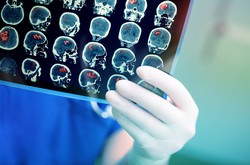Brain function and its networks
The EU-funded MIND (Modelling and inference on brain networks for diagnosis) project developed its models using data from patients with multiple sclerosis and Alzheimer's disease (AD). Moreover, the team explored the practical limitations of the methods. Advances include an approach on functional, structural and morphological connectivity as well as transcriptional similarity of gene expression. The researchers also developed techniques to analyse functional connectivity graphs. Diagnosis in autism was improved by combining fMRI data from different acquisition sites. The project also developed pattern recognition in neuroimaging toolkit software for predictive modelling that will avoid making errors in diagnosis. Significantly, MIND scientists showed that the way the regions are divided is crucial, and changing the atlas can lead to dramatically different results. Resting state function relates strongly to areas of high gene expression similarity. Initial work suggests that specific networks relate to particular genes. Development of gene sets could dramatically reduce the need to recruit large numbers of patients from genome-wide association studies. Cognitive performance in post-traumatic stress disorder is related to genetic make-up and expression. Definitive clinical diagnosis of Alzheimer's may become more timely thanks to predictive models of disease evolution. The researchers also showed that slow vascular reactivity is linked to AD and mild cognitive impairment. Schizophrenia onset may also be easier to pinpoint when due to gene deletion. By linking functional imaging to genetics, fMRI can be added to the tools in a clinical setting for early diagnosis and prognosis of neurological disorders. Precision medicine in the neurodegenerative world could become a reality, of benefit to the patient due to early treatment, particularly when involving recommended lifestyle changes.







